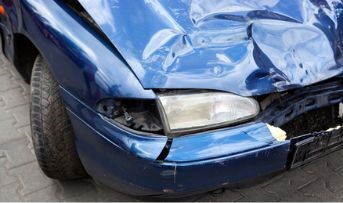Blog Details - Magma HDI

Complete guide on standalone damage car insurance 30th November 2022
Standalone own-damage car insurance is optional, unlike third-party car insurance. However, you must buy your standalone damage car insurance since it will help you get coverage for damages to your car during an accident or a natural or man-made disaster like a fire outbreak, theft, flood, etc.
What is covered under standalone damage insurance?
By looking at what this policy covers, let's better understand how standalone car insurance functions. A typical own-damage policy will protect from the following:
● Accident-related damages or total loss
● Vehicle theft
● Damage that is beyond repair as a result of fire, lightning, explosion, or self-ignition
● Natural calamities such as landslides, earthquakes, or floods can cause damage
You can file a standalone damage car insurance claim with your car insurance provider if your vehicle is damaged as a result of one of these events. Nowadays, raising a standalone damage car insurance claim is simpler than ever before. You can visit the insurer's website, log in, complete a form, evaluate the damage to your automobile, and then make repairs after the claim is approved.
Factors that affect standalone car insurance premiums.
Your standalone car insurance premium can easily be impacted by a change in any of these variables.
1. Insured Declared Value:
Your car's IDV, or insured declared value, is its current market value and a key component in calculating its own-damage premium. If you decide to give your car a greater IDV, your standalone car insurance will be expensive.
2. Age of the vehicle:
Your vehicle depreciates with time and loses value. As a result, if your car is older, your car insurance premium will decrease.
3. Your location:
If you drive in an urban, congested area, such as a big city, your own-damage auto insurance rate will go up. This is because there is always a chance that the car will be stolen or damaged. The danger is also lower, and the premiums are lower in smaller towns and villages.
4. Car safety:
Installing safety features on your car reduces the possibility of damage. For instance, airbags reduce the likelihood of your vehicle sustaining damage, minimising car insurance premiums.
5. Model of the vehicle:
Any damage caused by an accident to a pricey or luxurious vehicle could be very costly. Due to the high risk associated with such a vehicle, the standalone insurance policy premium for own damage will also be expensive.
6. Engine cubic capacity:
Your car's engine cubic capacity significantly impacts your premiums. Compared to vehicles with engines under 1500cc, the damage premium for vehicles with an engine capacity beyond 1500cc will be higher.
7. No Claim Bonus:
When you renew the policy, your rates will be reduced if you haven't made any claims for auto-related damages during the policy year. As a result, avoiding these claims allows you to pay lesser premiums for your standalone own damage insurance.
Who should buy standalone damage insurance?
If you just have third-party auto insurance at the moment, it is advised that you purchase your standalone damage coverage. It increases the range of protection for your vehicle during emergencies like a car accident, a man-made disaster, or a natural disaster.
Here is the formula to calculate standalone damage car insurance premium:
You must know your car's Insured Declared Value (IDV). Using the formula below, you can easily determine your four-wheeler's IDV:
IDV= (showroom price - depreciation cost) + (cost of any car accessories - depreciation cost)
Once you know your car's IDV, you may use the following method to determine the cost of standalone own damage insurance:
Standalone Damage premium = IDV X (Premium Rate) + Add-on Covers - Policy Discounts and Benefits
Check for new car insurance rates before investing in standalone damage insurance. Contact your insurance provider to get the desired answers if you have any queries.
Click HERE to buy a car insurance policy.
Disclaimer: The information provided above is for illustrative purposes only. To get more details, please refer to policy wordings and prospectus before purchasing a policy.

